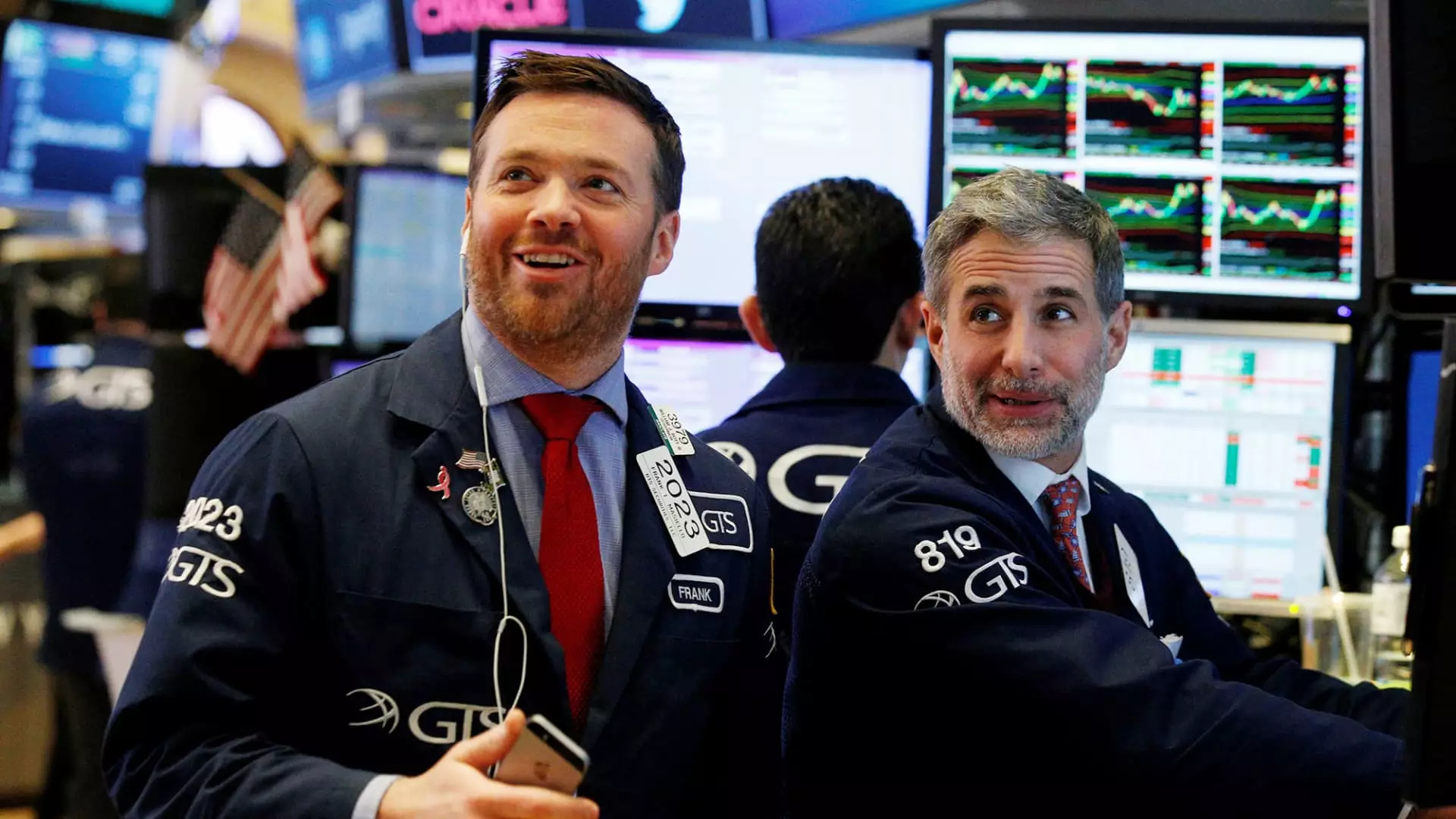The S&P 500 closed at an all-time high on Friday, signaling a strong rebound for the stock market after a brief stumble at the beginning of the new year. The broad market index surged 1.23% to settle at 4,839.81, surpassing its previous record intraday and closing highs set in January 2022. This impressive performance was mirrored by other major indexes as well. The Dow Jones Industrial Average, which had already reached its own record at the end of last year, added 395.19 points, or 1.05%, to end at 37,863.80. The Nasdaq Composite also saw a substantial gain of 1.70% to 15,310.97, while the more tech-focused Nasdaq-100 reached a record high with a 1.95% increase. As a result, all three major averages are now in positive territory for 2024.
The resurgence of the S&P 500 in 2023 was a significant milestone for the market. After experiencing a 19% decline in 2022, the index bounced back with a remarkable 24% gain. This recovery was driven by a combination of factors, including positive economic indicators and moderating inflation levels that led the Federal Reserve to pause its interest rate hikes. While the benchmark came close to reaching a new record after a robust fourth-quarter rally, it fell slightly short. Nonetheless, recent market activity, specifically the buying surge of Big Tech leaders like Apple, suggests a strong bull market that began in October 2022 rather than a temporary bounce within a bear market. Since reaching its low point, the S&P 500 has climbed more than 35%.
The tech sector played a pivotal role in the S&P 500’s notable performance. Strong demand for companies leading in artificial intelligence (AI) and those with differentiated tech products propelled the market to new heights. The tech sector experienced a 2.35% increase on Friday, making it the best-performing sector of the week. This persistence in tech-led growth demonstrates that investors continue to place high value on innovation and advanced technology. Matt Stucky, the chief portfolio manager at Northwestern Mutual Wealth Management, emphasized the significance of tech companies’ leadership during the market’s rally. This trend has persisted throughout 2023, spilling into 2024 and solidifying the tech sector’s dominant position.
As investors celebrate the S&P 500’s record-breaking climb, questions arise regarding the sustainability of this growth momentum. Matt Stucky points out that the market’s performance in 2023 was primarily driven by rising multiples rather than earnings. Multiple expansion often occurs during economic recoveries as investors anticipate future growth. However, if the anticipated recovery fails to materialize, the sustainability of reaching and surpassing new highs becomes uncertain. Stucky highlights the Federal Reserve’s ability to navigate an economic slowdown without triggering market turbulence as a crucial factor influencing the market’s future trajectory.
Fresh consumer data released on Friday showed an encouraging increase in consumer confidence and improved sentiments about the economy and inflation. The University of Michigan’s Survey of Consumers indicated a significant 21.4% year-over-year jump, reaching its highest level since July 2021. This boost in consumer confidence is a positive sign for the overall economy and could potentially bolster future market performance. Furthermore, several companies reported strong earnings and positive business developments that contributed to the market’s upward trajectory. For instance, insurance company Travelers witnessed a 6.7% rise in its stock price after posting an earnings beat. Additionally, Schlumberger reported better-than-expected top and bottom lines, resulting in a 2.2% gain, while Ally Financial’s strong quarterly results and the sale of a business unit to Synchrony Financial drove its stock price up over 10%.
The recent surge in the stock market, with the S&P 500 reaching an all-time high, is undoubtedly a positive development for investors. However, caution is necessary as uncertainties remain. The market’s future trajectory depends on various factors, including the Federal Reserve’s handling of interest rates, sustained innovation in the tech sector, and the performance of key economic indicators. As the bull market continues, investors should carefully assess their investment strategies, considering both the risks and potential rewards of participating in the current market conditions.

Leave a Reply